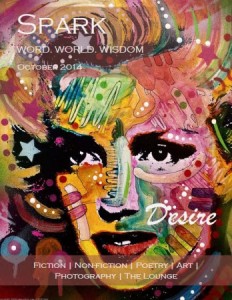by Chandrashekhar Sastry
The ship was at anchor outside the Suez Canal waiting its turn for a passage when a couple of countrycraft came alongside. Some hawkers carrying merchandise climbed up the rope ladders that were let down and with them was a Gali-Gali man, an Egyptian folk magician. He was a large person with a bulging Arab robe over several layers of clothing. A shapely beard, and a cap like a frustum of a red textured cone, framed the soft Egyptian features. A black tassel, one end anchored at the top, was freely swinging to and fro. The red cap and black tassel lent his visage dignity and balance. It was quite different from the gaunt, hooked nose, stereotypical Arab profile. The large compelling eyes, under bushy eyebrows, held my attention when they turned upon me. He looked like a man who could make things happen the way he wanted them to.
A few of the European and English passengers haggled with the merchants for the pretty rugs and some superbly crafted wooden handicrafts. Queen Nefertiti in profile was the most popular image, followed by the frontal view of Tutankhemen. The Asian passengers hardly cared to look at the wares presented and gathered around the Gali-Gali man. By the time the deck trading was over we were in the front row at the performance. The Gali-Gali man was several grades more accomplished than the street performers of Bombay that I remembered, and he had no assistants. He started off with a string of Arabic abracadabra and a repeated ‘Gali Gali’, which gave him his name. Waving a wand he transformed it into a bouquet of cellophane flowers in the most impossible colours; with another wave and repeated gobbledygook he restored the bouquet to its original form of a wand. Lifting his cap and revealing a balding head he turned it around and poured into it a stream of water, which emanated from the closely held fingers of one hand. ‘Water of the Nile,’ he said, grinning widely. He was standing against a rail on the starboard under the lifeboats. With a swift glance overboard, he tossed the water out and replaced his cap, bowing to our loud applause.
He pulled out of his bag the standard accoutrement of the magician. A set of steel rings looped into one another was passed around for the front row to inspect. They formed a straight chain of five round links and he was asking us to pull it apart and test the integrity of each ring. All the while he was speaking in a mixture of good English interspersing it with what I supposed was the Arabic equivalents of mantras. He came nearer and lifting the rings and jingling them slowly with an imperceptible sleight of hand he separated them. Coming up to me he asked me check the rings, to pass them from one hand to the other, one by one. He was standing by my side and helping me along. Suddenly he took all five from my grasp and without a moment’s hesitation just jingle jangled them together and, as they rang their metallic notes, they had linked together. He triumphantly displayed the joined hoops, each looped to the other, now in a circular chain of five links. Holding them high above his head he marched around as again the whole assembly clapped in appreciation. ‘Someone doesn’t have the time,’ he suddenly said loudly. ‘Gentlemen, please look at the time,’ he called out, and let out a peal of echoing laughter. All looked at their wristwatches and as I turned my wrist I found that my watch was missing. He was looking at me piercingly when I met his eyes. With a smile pretending complicity, he beckoned me with one hand while the other held a closed fist. His face beaming, he turned around, calling the attention of the audience, then opened his hand to reveal my wristwatch resting in his palm. ‘Ah, yes my dear Sir, I shall give you the time,’ and again applause. I knew that he had palmed my watch while I was inspecting the rings of steel with which he had juggled. Thanking him, I sheepishly walked back to my place.
There followed several other feats of legerdemain, some very clever and astonishing card tricks, and we were all left expecting, any moment, the proverbial rabbit out of the conjurer’s hat. By this time we had made way for some ladies in the rear to move over to the front and a beautiful Persian lady in an evening gown stood in front next to Ahmed, a professor returning from a sabbatical spent in Oxford. I had spent many evenings sitting on the deck chatting with him and was greatly impressed by his knowledge and erudition. The Gali-Gali man came up to her them and was waving his arms while speaking. He passed his hands over Ahmed’s head and pulled out a small white chick, maybe only a day old. It seemed to emerge from the bushy hair on the professor’s head. After a quick display it was promptly put into a pocket of his voluminous robe. The next two chicks came out of the inner pockets of the jacket of a very surprised Ahmed and were quickly confiscated into the conjurer’s pocket. There were gasps of appreciation from the audience, which drew a wave and a flourish from the magician. The Gali-Gali man then turned to the lady in the evening gown with a modest display of cleavage. Waving his hands in front he started picking out chicks from inside the top of the lady’s gown amidst shrieks and protests till Ahmed gallantly intervened and patted him on the shoulder asked him to desist. He was immediately apologetic and the red-faced lady waved him away. With that he ended his performance and with eyes downcast in a pose of contrition he passed his hat around.
Pic: http://www.flickr.com/
Chandrashekhar Sastry is a published author and has won several prizes for his short stories. His first book The Non Resident Indian – from Non-being to Being (Panther 1991) was a path breaking study on the Indian diaspora. His second book was a novel The Tanjore Painting (Partridge –Penguin 2014) dealing with the cultural imports that non-residents carry to their new homelands. Dr Sastry is an engineer scientist, has travelled across the world and now lives in Bangalore.






